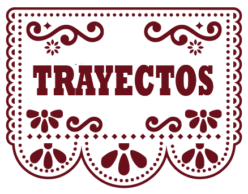¿Qué te gusta hacer en tu tiempo libre? ¿Dónde haces estas actividades? Use the following vocabulary to answer these questions. Look at the photographs, and discover how many of these words you already know. Again, los cognados will help you! Click on the titles to listen to the words.
![]()
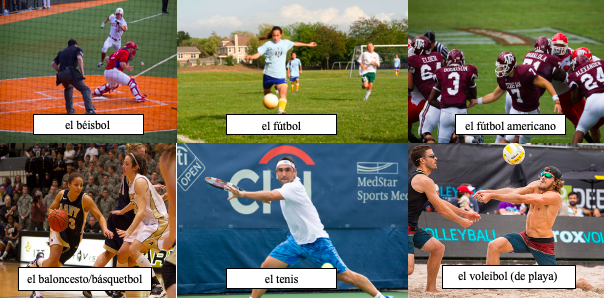
![]() ¡Ojo!
¡Ojo!
Remember that in Spanish, when a is followed by el, we need a contraction: the word al. Me gusta jugar al (a + el) béisbol.
![]()
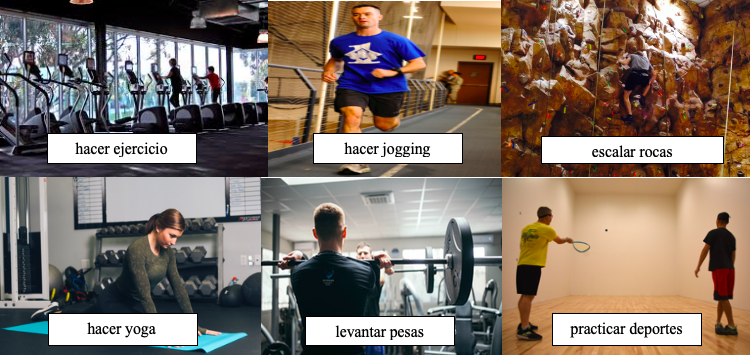
![]()
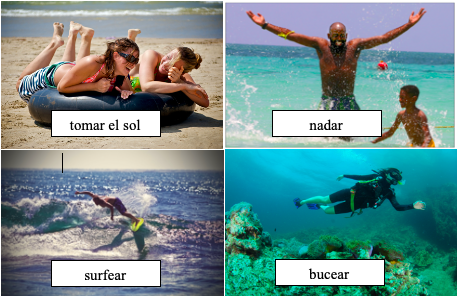
![]()
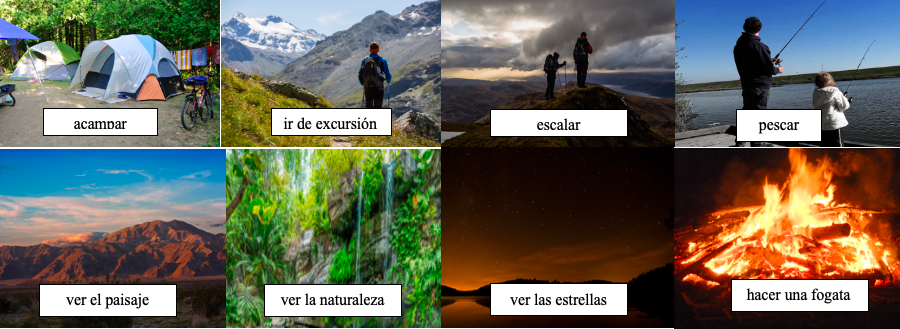
![]()
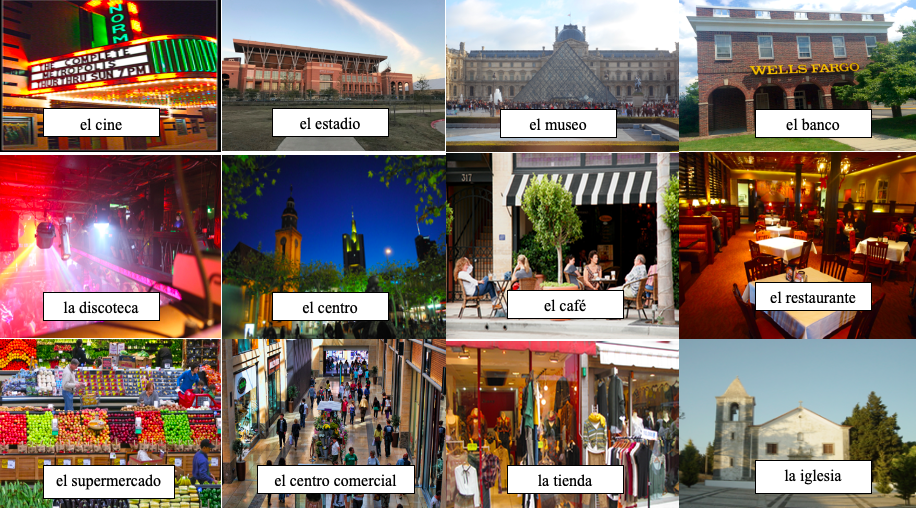
![]()
| descansar | to rest |
| entrenar | to train |
| ir a una fiesta | to go to a party |
| ir a un partido de (deporte) | to go to a (sports) match |
| ir de compras | to go shopping |
| jugar los vídeo juegos | to play video games |
| mirar televisión | to watch television |
| pasear | to take a stroll |
| pintar | to paint |
| sacar fotografías | to take photographs |
| salir con amigos | to go out with friends |
| ver una película | to watch a movie |
| visitar un lugar/a una persona | to visit a place/a person |
![]()
| aburrido/a | boring |
| activo/a | active |
| apasionante | thrilling |
| arriesgado/a | risky |
| atractivo/a | attractive |
| aventurero/a | adventurous |
| cauteloso/a | cautious |
| difícil | hard; difficult |
| emocionante | exciting |
| fácil | easy |
| fantástico/a | fantastic |
| fascinante | fascinating |
| peligroso/a | dangerous |
| relajante | relaxing |
| ridículo/a | ridiculous |
Ahora usamos nuestras palabras y expresiones nuevas. Es hora de Paso 1. Using the first picture in the page and the presentation that follows it (Material 2), revise and learn more words to describe sports. ¿Cuáles de estos deportes son tus favoritos? ¿Cuáles son los más populares en tu ciudad, estado y en los Estados Unidos? Paso 2. En la misma página (https://bit.ly/TrayectosDep), completa las actividades 1, 2, 5 y 6. Be ready to discuss your results with other classmates. Paso 3. En la misma página (https://bit.ly/TrayectosDep), realiza la actividad 7. Prepare your oral presentation using the example given in the activity, record it, and share it with your instructor. Paso 4. Add the new words to your glossary for this module. Actividad 1-2. Los pasatiempos de Sara y Rachel. La prima de Amy, Sara, just met Amy’s housemate, Rachel. Ahora hablan de sus pasatiempos y actividades favoritas. Lee la conversación y responde las preguntas. Sara: Rachel: Sara: Rachel: Sara: Rachel: Sara: Rachel: Sara: Rachel: ¿Comprendiste? Responde estas preguntas sobre la conversación. (By Dustin Luke, used with the author’s permission. This is copyrighted material, and it should not be embedded in derivatives.) Min: 0:00-1:10 With whom of all the interviewees do you connect more? Who likes the same activities that you like? Why? Explain. En el vídeo, el chico usa la expresión “ratos libres” instead of “tiempo libre”. You can use both expressions to talk about the activities you do/ you like to do in your free time. With a classmate, prepare a conversation. You will need to use the verbs gustar and the vocabulary you learned in Hablemos más. Include the following information. Estudiante 1. You’ve just met a person from Argentina, and you are trying to learn more about their hobbies and favorite activities. Estudiante 2. You are an exchange student from Argentina talking to a local student you’ve just met. Talk to this person about your favorite hobbies and activities. Actividad 1-4. Investigación: ¿Qué haces en tus ratos libres? You are going to find out what students do in their free time. For this investigation, you will interview five classmates and five people outside of class. Notice that the five people outside of class do not have to be Spanish speakers/learners, but the data recorded must be in this language. Paso 1. Think of the people who you will be interviewing for this investigation and write down their names. Paso 2. How would you ask questions about what people do in their free time in Spanish? How about whether they like doing one thing or another? Use the Spanish you already know to create two questions to ask your participants. Paso 3. You will now collect your participants’ responses using the following tables. Tip: When you know who you will be interviewing, write their name down in the boxes so it is easier to follow each step. Ask the questions you developed in Paso 2 (write your questions in the Pregunta boxes) and record their responses. You may ask the question in English to the “otros participantes,” but the responses must be recorded in Spanish. Encourage them to give more than one answer by asking ¿Qué más? Paso 4. Now it’s time to analyze your responses. What are some common trends you see in your data? Compare and contrast the responses from the class with the responses from the other group. Describe your findings in English. Paso 5. Share the results of your research with two different classmates. ¡Usa el español! ¿Qué actividad es la más común en los dos grupos? ¿Qué actividad es la más común individualmente? ¿Son tus resultados similares a los resultados de tus compañer@s? ![]() ¡Manos a la obra!
¡Manos a la obra!![]() Actividad 1-1. Más sobre los deportes. Visita la página en https://bit.ly/TrayectosDep.
Actividad 1-1. Más sobre los deportes. Visita la página en https://bit.ly/TrayectosDep.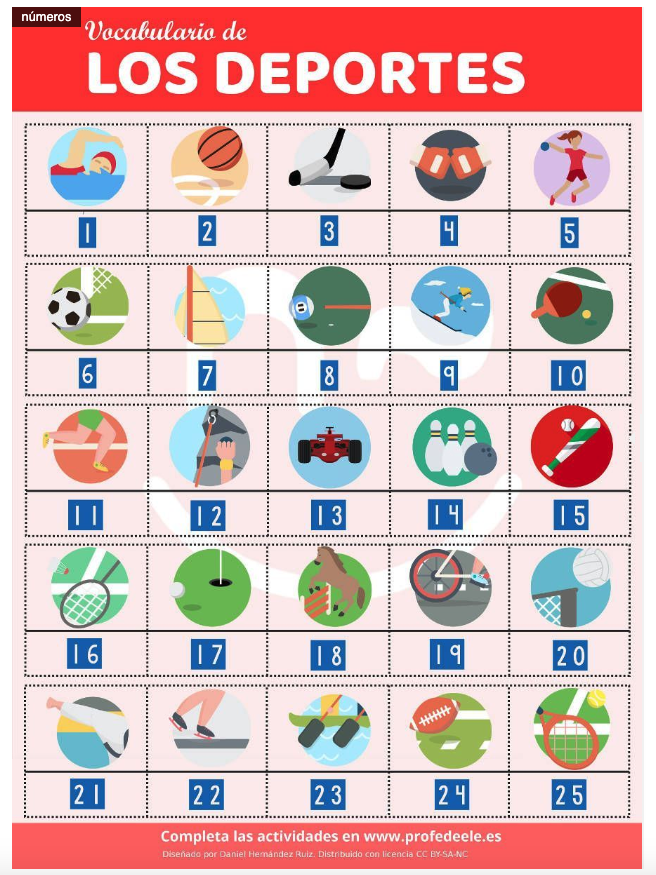
![]()
![]() Actividad 1-3. En tus ratos libres. Now that you have read the conversation between Sara and Rachel on the topic of hobbies and favorite activities, let’s listen to other young people talking about the same topic. Click on the following link https://bit.ly/VideoVol21-2Trayectos and watch the first 1:10 minutes of the conversation. Fill in the box with the hobbies that are mentioned. ¿De dónde son los jóvenes?
Actividad 1-3. En tus ratos libres. Now that you have read the conversation between Sara and Rachel on the topic of hobbies and favorite activities, let’s listen to other young people talking about the same topic. Click on the following link https://bit.ly/VideoVol21-2Trayectos and watch the first 1:10 minutes of the conversation. Fill in the box with the hobbies that are mentioned. ¿De dónde son los jóvenes?
Chicos (in order of appearance)
¿Qué hacen en su tiempo libre?
1. Chica 2. Chico
3. Chico
4. Chico
5. Chica 6. Chico
7. Chica 8. Chico
![]() ¡Ojo! (Pay attention!)
¡Ojo! (Pay attention!)
![]() Conversemos
Conversemos
Compañer@s
de clasePregunta 1
Otras personas
Pregunta 1
1.
1.
2.
2.
3.
3.
4.
4.
5.
5.
Compañer@s
de clasePregunta 2
Otras personas
Pregunta 2
1.
1.
2.
2.
3.
3.
4.
4.
5.
5.
![]()
Click on the button below to continue using your new words.
Now it’s time to learn how to talk about future activities. Vamos a:
